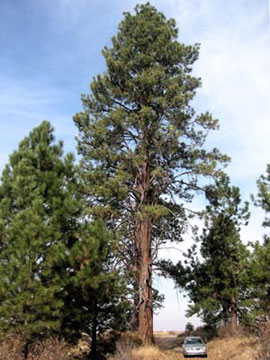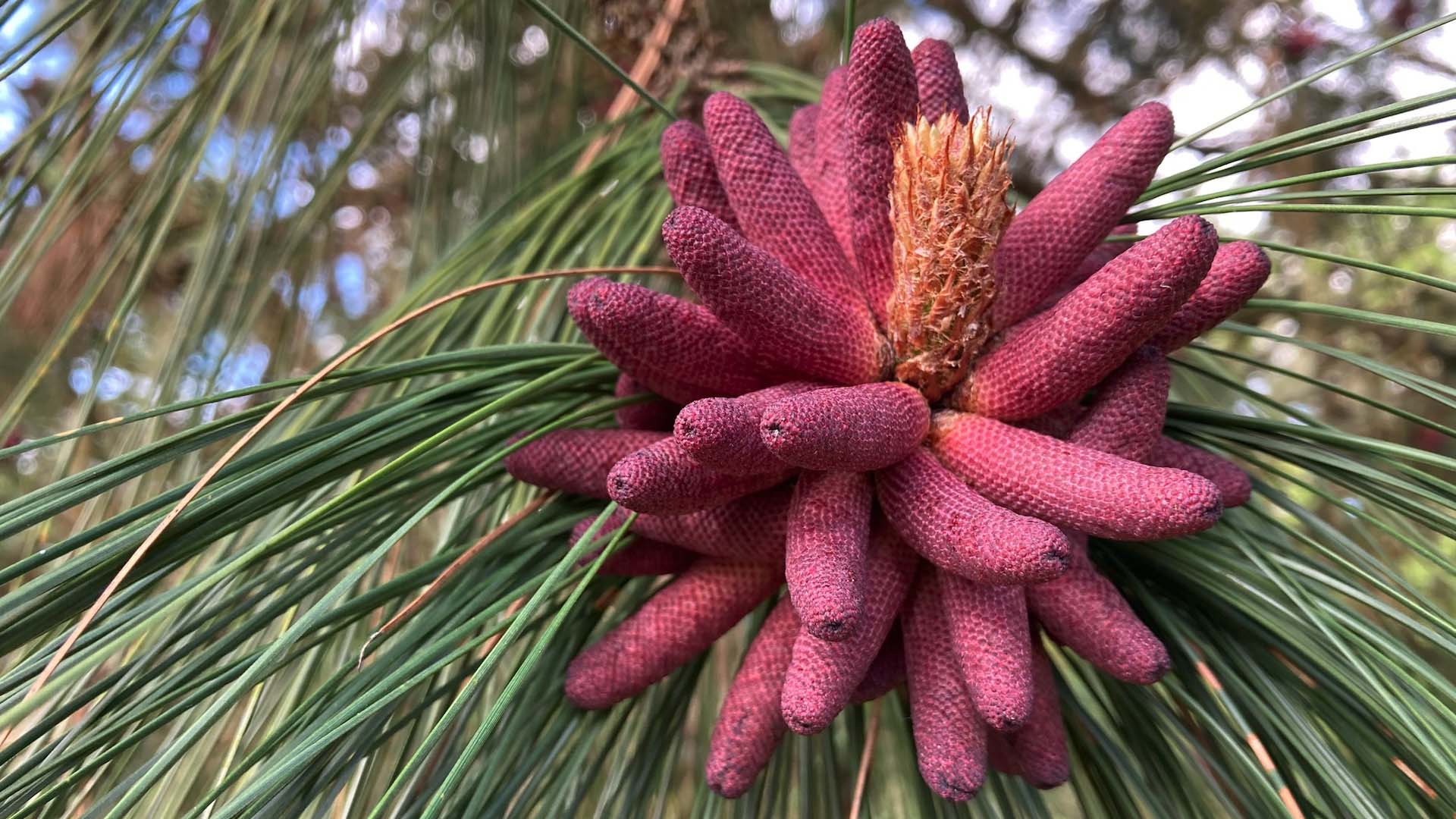This month’s featured native: Willamette Valley Ponderosa pine (Pinus ponderosa var. benthamiana)
Ponderosa pine is commonly thought of as one of the major tree species found east of the Cascades, but there is a variety that is native to the Willamette Valley. Like its eastern cousin, “valley pine,” as it’s sometimes called, is a coniferous evergreen tree that can exceed 60 m (200 ft) in height (though they do not generally get this tall on the west side of the Cascades), with a spread of 7.5 m (25 ft) or more. The long, graceful needles grow in groups of three, and may be 15 to 24 cm (6 – 10 in) in length. The resinous bark also resembles that of the eastside variety, both in appearance (dark brown-grey, becoming yellow-orange with age, with distinctive vertical fissures) and scent (redolent of vanilla when warmed by the sun). As with most conifers in the Pacific northwest, valley pine produces “male” cones (called pollen cones) and “female” (seed) cones; the former are reddish-purple, and appear in clusters of 5-30, while the latter grow individually, starting red and turning green-brown as they mature. These cones fall off during the first winter after ripening, by which time they are generally around 10 cm (4 in) long.
Ponderosa pine on both sides of the Cascades prefers open, sunny habitats; where the two varieties differ is in their tolerance for soil moisture. Unlike the eastside variety, valley pine is adapted to the wet winters of western Oregon, while retaining its ability to withstand summer drought. This makes it an outstanding candidate for planting in the face of climate change. This variety of Ponderosa pine is found from Oregon west of the Cascades through the Sierra Nevada and Coast ranges of California.
Pines are a very valuable food plant for birds and small mammals, including chipmunks, squirrels, jays, grosbeaks, chickadees, and nuthatches, who eat the seeds; large pine trees provide roosting and nesting sites for many bird species, while smaller trees are used as cover by a huge array of animals. Valley pine is of particular importance to the Lewis’s woodpecker (whose local population all but disappeared as valley pine forests were logged), as well as to several moth and butterfly species whose caterpillars feed on its needles. If you have a large sunny space and want a great habitat/canopy tree that requires no maintenance, look no further!


